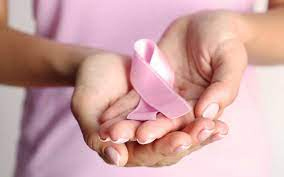Endometriosis is a persistent health condition that impacts a significant portion of women in their reproductive years, affecting approximately 1 in 10 between age 20 to 45 years.
This condition arises when tissue akin to the uterine lining, known as the endometrium, starts to develop outside the confines of the uterus. Remarkably, this tissue can establish itself on various organs within the pelvic and abdominal regions, including the ovaries, fallopian tubes, bladder, and bowel.
The array of symptoms associated with endometriosis can be quite diverse, ranging from pelvic pain to heavy menstrual bleeding and even infertility. Regrettably, there is presently no known cure for endometriosis, but there are several therapeutic approaches available to alleviate and manage its debilitating symptoms.
Common Symptoms of Endometriosis: Pelvic Pain: Pelvic pain can be felt in the lower abdomen below the belly button. The pain can be sharp stabbing or dull ache. This kind of pain will come and go but sometimes it will be constant. It can be worse if you are doing activities such as standing, sitting, or walking. As per the research this pain can affect people from all ages and genders, but it is more common in women.
Pain relief can be attained using non-prescription medications like ibuprofen and acetaminophen, which prove effective in managing mild to moderate discomfort. Another viable option is hormonal therapy, which can hinder the growth of endometriosis tissue and alleviate pain.
Other common symptoms are chronic pain, painful menstrual periods, painful bowel movements, and excessive bleeding.
Risk Factors of Endometriosis:
Family history: Endometriosis runs in families, so if you have a mother, sister, or grandmother with endometriosis, you are at increased risk of developing it yourself.
Early menstruation: Starting your period before the age of 11 increases your risk of endometriosis.
Short menstrual cycles: Having menstrual cycles that are shorter than 27 days also increases your risk.
Heavy menstrual periods: If your menstrual periods are heavy or last longer than 7 days, you are also at increased risk.
High estrogen levels: Having higher than normal levels of estrogen in your body can increase your risk of endometriosis.
Low body mass index (BMI): Women with a low BMI are more likely to develop endometriosis.
Other medical conditions: Certain medical conditions, such as Müllerian anomalies (abnormalities in the development of the uterus and vagina) and immune system disorders, can also increase your risk of endometriosis.
Reproductive system disorders: Women with reproductive system disorders, such as polycystic ovary syndrome (PCOS) and fibroids, are also at increased risk.
Complications of Endometriosis:
If endometriosis is not addressed, it can lead to several complications, including:
Infertility: Endometriosis can damage the fallopian tube, preventing the egg from meeting the sperm for fertilization, which can result in infertility.
Cancer Risk: There is a potential for progression to cancer, particularly ovarian cancer.
Organ Damage: The uterus and other organs can be damaged.
Scar Tissue and Adhesions: Endometriosis can lead to the development of scar tissues and adhesions.
Chronic Pain: Persistent pain is a common complication of endometriosis.
Ovarian Cysts: The condition can lead to the formation of ovarian cysts.
Urination Problems: Issues with urination can arise as a result of endometriosis.
Can We Prevent Endometriosis from Happening?
While endometriosis disease cannot be completely prevented, certain lifestyle changes may help reduce the risk of developing the disease. These include the following.
1) Maintaining a healthy diet, such as consuming plenty of fruits that have vitamins and iron.
2) Pregnancy and breastfeeding can potentially lower the risk.
3) Regular physical exercise is beneficial.
4) Limiting the intake of caffeine or leaving it completely
Endometriosis in Pakistani women:
Endometriosis is a significant health concern for women worldwide, including those in Pakistan. It’s a chronic, estrogen-dependent disorder characterized by the presence of endometrial tissue outside the uterine cavity. Studies have been conducted to understand the prevalence and impact of endometriosis among Pakistani women.
For instance, one study explored the association of endometriosis risk factors with single nucleotide polymorphisms of the follicle-stimulating hormone receptor (FSHR) gene in Pakistani women. Another study focused on improving awareness and knowledge about endometriosis among Pakistani women. Despite these efforts, there is still a need for more research and awareness campaigns to address diagnostic delays and bridge the knowledge gap about endometriosis in Pakistan.
Treatment of Endometriosis:
Pain relief can be attained using non-prescription medications like ibuprofen and acetaminophen, which prove effective in managing mild to moderate discomfort. Another viable option is hormonal therapy, which can hinder the growth of endometriosis tissue and alleviate pain. This approach encompasses treatments such as birth control pills, progestin-only pills, as well as gonadotropin-releasing hormone (GnRH) agonists and antagonists. For severe cases of endometriosis or when other treatments are ineffective, aromatase inhibitors may be prescribed. These medications work by reducing the body’s estrogen production.























